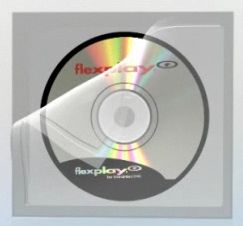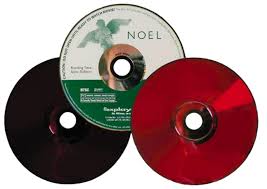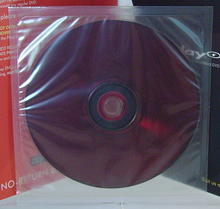Where have we seen this model of DVD rental before?
Previously, On Allison’s Written Words…
A DVD player descended from the heavens, a gift from the Gods of DVDs that allowed families to cheaply purchase discs, and watch them over a 48-hour cycle for that cost (or keep it for an additional cost).

Once you viewing period is up, your DVD player from the Gods of DVDs rejects it, and you have a choice – buy more viewing time, trade it with someone else you know who has this exact same DVD player, or take it back to the store you got it from and recycle it.

VSCO Girls of 1998 were impressed by it, families gathered around to watch the same movie again, and Circuit City believed they had something truly special.
It was called DIVX, and it was a spectacular failure, lasting one year and eight days, and costing Circuit City an after-tax loss of $114 million. Not since Scrambled UHF had something been such a spectacular failure. We could mention New Coke, Action Max, and Leonard Part 6, but I wrote about two of those in a separate article…together.
You would figure that the concept of disposable DVDs is obviously not a good one, given the failure of DIVX (which was a victory for video rental stores everywhere…for a little while), but someone else wanted to take a crack at the concept, employing a totally different method to rendering something totally useless.
Ladies and gentlemen, I proudly present your movie, should you choose to watch it. You have 48 hours to do so, and at the end of that window of time, it will self destruct.
I give you…
Flexplay: The DVD Without the Hassle

Flexplay, you ask?
Let this promo tell you all about it!
Wow, so you can recycle your disc after you watch it? No video store trips? Sounds amazing!
Yeah, amazing.
Flexplay is a trademark DVD technology, a originally a joint venture with Disney’s Buena Vista Entertainment under the name eZ-D. Developed by professors Yannis Bakos and Erik Brynjolfsson, who founded Flexplay Technologies in 1999, the intent was a short-term rental of newly-released movies to the DVD format. Upon opening the plastic packaging housing the disc, viewers had 48 hours to watch their movie, before the disc turned dark red or black, a reaction of a dye in the discs when exposed to oxygen in the air. While special DVD players were not needed (already an advantage over DIVX), the discs cost $6.99 each, and movies were made available to the format between two months and several years after they were released to regular DVD.
The first eZ-D discs were rolled out in August 2003, test marketed in Austin, Texas, and made available at grocery stores. Cost and release lag of movies resulted in the cancellation of test marketing. Consumers rejected the concept (I guess they remembered what happened with DIVX a few years earlier?), and the product never really took off.
Because they didn’t learn the first time that recycled DVDs weren’t really a stellar concept, am I right?
A Second Chance to Rent and Watch…
Flexplay Technologies was purchased by Convex Group in 2004 (who also owns HowStuffWorks), and the price of discs was reduced to $4.99, the typical price of a two-day rental, with the first nationally-released film a 2004 Christmas movie, Noel. That film had the distinction of being released to theater – limited due to theater owners being unhappy with the film’s release to several formats at the same time – as well as cable television and Flexplay DVD. But not regular DVD.
If you’ve never heard of this movie, it was directed by Chazz Palmintieri and is one of those interlocking story films featuring several people who are all somehow connected. In other words, it is a Garry Marshall-type films – a bunch of well-known actors, meet cutes, and intertwined stories (Side story: My husband and I saw Valentine’s Day (one of those Garry Marshall interconnected story films) a few years ago, and got so into it, we wound up DVRing the movie so we could finish it the next night. We enjoyed it.). Garry Marshall had nothing to do with this intertwined story, and quite frankly, I’d never heard of it until I saw a Flexplay promo for it very randomly on YouTube a few years back. I’m not even sure if this movie is easy to find…

…well.
I stand corrected (after having to search very specifically for “Noel movie 2004”). You can watch it with ads, pay $2 for no ads, or you can get it on a regular DVD…or in one of those multi-movie deals. Two left, folks!
Oh, and there’s some creepy-ass Christmas ball ornament VHS of the same name, if you’re interested in that instead.
And Car 54, Where Are You? is on Prime, in case you really needed to know that.
I got a little off track – back to Flexplay’s life as a DVD format…
By 2008, Staples announced they would carry the rentals in their stores. There’s not much else, but the format was discontinued in April 2011…almost eight years after test marketing failed.

Wow, you can fail test marketing, but someone will swoop in, buy the company that manufactured you, and give you a second chance as an apparently viable format, competing with the rental market and DVDs that don’t go all planned obsolescence within 48 hours (that’s a fun word to spell!), and you’ll have another seven years of life to live!
Even DIVX didn’t have that kind of chance. It failed, and the format was GONE, put out to pasture within two years of discontinuation.
So you know all about the “open” and “watch” aspect of Flexplay, but what about that third part?
Self Destruct…and RECYCLE!
The color-change aspect of the Flexplay discs, where the DVD’s shiny underside turns dark red or black, is the aforementioned reaction of the chemical process when exposed to oxygen.

The discs were dual-layer DVD-9 discs, but the difference is the polymer resin adhesive, carrying leuco dye, holding those layers together. This chemical is sensitive to oxygen, hence, rendering the discs unplayable/unreadable after the chemical process happens. An unopened disc can survive up to one without watching.
But dead technology isn’t without people willing to test it…just to make sure.
Ben Minnotte of Oddity Archive did a whole episode of disposable DVDs (including last week’s subject, DIVX), and also covered Flexplay. The segment on Flexplay, including his test of a eZ-D disc begins at around the 12-minute mark.
Ben did a follow up to his test several episodes later, featuring that same eZ-D Flexplay disc of Armageddon. The test is so fascinating, and as Ben says, he definitely has a “zombie disc!”
But for every (almost) successful test of a “Zombie Disc,” there is an unsuccessful test, as the YouTube channel Technology Connections demonstrated.
I guess those crazy Disney discs tried to live on and on…because the Paramount discs obviously didn’t.
The Inflexible End of Flexplay

By the very end of the Flexplay format’s life, the discs were priced at 99 cents. On the secondhand market, they are priced at $69.99 and $99.95 eBay. There’s only two listings there, and well, nothing elsewhere.
Not like they would work. Not everyone lands a copy of Armageddon: The Zombie Disc Chronicles.
The Obligatory “Did Allison Have/Use/Try” Today’s Topic?
Short answer: no. No I did not.
I never rented/owned any Flexplay discs. The roll out of the original discs was no where near where I lived (which has always been in Jersey), and even in its second life, it wasn’t one I was familiar with. I’ve gotten DVDs from Red Box and Netflix, but never Flexplay. I worked for a video store between 2003 and 2005, and once I left there, I didn’t rent movies much. That became non-existent after I moved. Not because the closest rental store was a Blockbuster (for SHAME!), but I just didn’t rent movies anymore. Go to the movies, yes. Watch them on TV, absolutely. Record them to DVD-RW’s, frequently. But renting just became something I didn’t do pretty much after 2006. I think I went to the video store twice beyond that.
I would have been interested to have tried this format, and see the incredible color-changing process happen during those 48 hours. Heck, I’m even more interested in this now, and would love to see one of these discs. Obviously, they probably don’t even work or change colors if you open them, and at the kinds of prices on eBay, it is a hard pass for me.
And Now, You!
Did you ever have the opportunity to try the Flexplay DVD format? What movies did you rent? Did you see the process of the disc “self destructing”? I’d love to know your stories of disposable DVDs…and perhaps “zombie discs.”
As always, your comments/feedback/likes are appreciated!
I’m always on the lookout for interesting topics (heck, I based more a year’s worth of articles on researching interesting and unusual topics!). The “Retro” articles are my way of keeping that research going somewhat, while adapting a slightly less structured format.
Until the next article, be it a Retro Watch/Rewatch, Retro Tech, Retro Read, Retro Listen, have a great day!

Cool article! The only thing I knew about it was what I had posted before, from an article I had read years ago and only vaguely remembered. I had no idea they actually lasted until 2011, I’ve never actually seen one. Once it became easy to rip or burn movies, this technology became obsolete. Plus, what happens if you get home and realize there’s a hole in your disc bag and the movie is already opened and who wants to check expiration dates on their movies. I always learn something new from you.
LikeLiked by 1 person
Lol thanks!!!!
So the actual production, I believe, stopped in 2009, but the discs were still available until 2011.
LikeLiked by 1 person